When a motorist drives negligently or recklessly and causes an accident that harms others, the driver is legally responsible for compensation for the victims’ resulting losses. Compensatory damages could include several different categories of physical, material, psychological and financial losses.
For example, a jury might award damages in a Pennsylvania personal injury claim for losses from a car crash like:
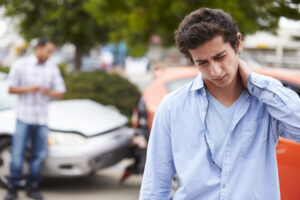 Past and future medical expenses
Past and future medical expenses- Transportation and lodging necessary to medical treatment
- Past and future lost wages and employment benefits
- Reduction in earning capacity
- Pain, suffering and mental anguish
- Property damage
- Therapies and rehabilitation
- Modifications to home and vehicles
- Housekeeping and personal assistance
- Incidental expenses
- And more
In extreme cases, the at-fault driver may be liable for damages for wrongful death to the surviving loved ones.
How are punitive damages different from compensatory damages?
Punitive damages serve a completely different purpose — to punish the wrongdoer and to deter others from behaving in similar fashion. Causing harm in a collision because of negligent driving attaches liability to the driver for comprehensive damages. But liability for punitive damages requires something worse than negligence.
A jury can award punitive damages over and above compensatory damages when the defendant’s actions were extreme. In Pennsylvania, punitive damages are appropriate when the conduct was “outrageous.” Pennsylvania courts have also described outrageous behavior for this purpose as willful or malicious.
Pennsylvania courts have said that there is “no set formula” for calculating punitive damages. The jury may consider all the circumstances that are relevant to determining whether punitive damages are appropriate against a defendant such as:
- Knowledge of and disregard of risk of harm to victim, sometimes called “reckless indifference”
- Defendant’s overall state of mind
- Nature of the driver’s behavior
- Type and nature of harm to victim
- Intentional harm
- And others
The size of a punitive damages award depends on the wealth of the wrongdoer because it must be large enough actually be a punishment.
College-aged drivers and alcohol
The NIH conducts research every year regarding the consumption of alcohol and its influence on driving statistics. According to the institute’s research:
- Nearly 60 percent of college students between the ages of 18 and 22 admit to consuming alcohol in the past month
- What’s more, approximately 40 percent of college students admit to binge drinking
- As a result, over 1,800 students between the ages of 18 and 24 die each year from alcohol-related accidents, including motor vehicle accidents.
What you can do to protect your child
If you have a college-aged child, there are precautions that you can take to protect them. Have an honest, straightforward conversation with your son or daughter about the effects of alcohol. Tell them that underage drinking is illegal, as is driving under the influence of alcohol or drugs. Either activity can have serious legal consequences, including an expensive fine, expulsion from their school or even jail time.
Inform them that when they go out with their friends, they should make plans on how to get home safely. This may involve:
- Designating a sober driver
- Catching a ride with a sober friend
- Taking public transportation
- Calling a taxi or rideshare
Any of these alternatives is better than your child experiencing an accident on campus caused by drinking and driving.
Dangerous medications that you should avoid taking before driving include:
- Muscle relaxers
- Sleeping pills
- Antihistamines, which are often inside over-the-counter cold and allergy treatments
- Pain relievers, including opioids, which have become a national concern on roadways
- Antidepressants and anti-anxiety medication
Depending on the medicine’s ingredients, it may affect you in a variety of ways. On certain medications, you may not be as alert as usual. Your response time may slow. Your perception of the road and other vehicles may not be accurate. You may also suffer fatigue, dizziness or nausea, which can distract you from driving safely. Such side effects could greatly increase your chances of causing an accident.
Any drug that makes driving unsafe must indicate such hazards on its label. Failure to read or heed the warnings could be a negligent act, should a driver cause a collision while using the drug. If another driver hits you while on a risky medication, they may be legally liable for the damage.
To avoid implicating yourself in a drugged driving collision, be aware of the potential side effects of any medicine you take. It may be wise to avoid driving for several hours after taking a new medication to make sure that you do not have a strong negative reaction. Speak to a doctor if you currently take medicine that impacts your driving ability.
Understanding Pennsylvania’s No-Fault System
Pennsylvania operates under a no-fault system when it comes to car accidents. This means that regardless of who is at fault for the accident, each party’s insurance company will cover their medical expenses and other losses, up to the limits of their policy. While this system aims to streamline the process of obtaining compensation, it can also present challenges, particularly when injuries are severe or when the damages exceed the limits of the insurance coverage.
Determining Fault in Pennsylvania Car Accidents
Despite the no-fault system, there are situations where fault still plays a significant role in determining compensation. In cases where injuries are severe or permanent, or where the damages exceed the limitations of the insurance coverage, the injured party may have the right to seek additional compensation by filing a personal injury lawsuit against the at-fault party.
Pennsylvania follows a modified comparative negligence rule, meaning that even if you were partially at fault for the accident, you may still be entitled to compensation. However, your award will be reduced by your percentage of fault. If you are found to be 51% or more at fault for the accident, you will not be able to recover any compensation.
“Highly Recommended” is the epitome of an understatement when it comes to the firm of McDonald At Law!! Michael McDonald’s genuine pleasant, and empathetic demeanor masks his legal astuteness, and the level of aggressiveness he implements in pursuit of a victim’s right and the monetary compensation legally entitled to us. I was involved in a motor vehicle accident at the hands of an intoxicated driver in York County. In my case I suffered what I described as an atypical injury, Mr. McDonald offered to be my Lawyer immediately after explaining to him the events leading to and after being struck in turn causing me to have a heart attack, when another law firm seemed hesitant. McDonald At Law secured a sizable monetary compensation that not only met my expectation but exceeded it. Mr. McDonald’s wealth of experience, and legal prowess is priceless and never did he act as the case was beneath his practice. In the end my family and I were well compensated, but also felt justified. Thank you McDonald At Law!!- Miguel Lopez
The Role of Comparative Negligence in Car Accident Cases
Pennsylvania’s comparative negligence rule adds another layer of complexity to car accident cases. Insurance companies may try to shift blame onto you to minimize their liability, so it’s crucial to have legal representation to protect your rights. Our attorneys at McDonald At Law understand how to navigate these nuances and build a strong case that demonstrates the other party’s negligence while minimizing your level of fault.
What is Whiplash?
Whiplash is a type of neck injury that occurs when the head is forcefully and rapidly thrown backward and then forward. This sudden motion causes the neck to extend beyond its normal range of motion, resulting in soft tissue damage to the muscles, ligaments, and tendons in the neck. Although whiplash is commonly associated with rear-end collisions, it can occur in any type of car accident where there is a sudden deceleration or impact.
Common Causes of Whiplash
Whiplash injuries typically result from car accidents involving sudden stops or changes in speed. These accidents often cause the head and neck to move abruptly, straining and damaging the delicate structures of the neck. The severity of whiplash can vary widely depending on factors such as the speed of the vehicles involved, the angle of impact, and the use of seat belts and headrests.
Symptoms of Whiplash
The symptoms of whiplash may not always be immediately apparent after an accident. It is common for symptoms to develop hours or even days later. Some of the most common symptoms of whiplash include neck pain and stiffness, headaches (often starting at the base of the skull), dizziness, fatigue, difficulty concentrating, and pain or numbness in the shoulders and arms. In severe cases, whiplash can also cause blurred vision, ringing in the ears (tinnitus), and difficulty sleeping.
What Is a Car Accident Police Report?
Following a car accident, law enforcement officers respond to the scene to provide assistance, gather information from witnesses and involved parties, and issue citations if necessary. Subsequently, they compile all pertinent details into a police report, encompassing their observations, statements from parties involved, and their assessment of fault. While the report itself doesn’t determine liability definitively, it serves as a valuable resource for individuals seeking compensation for injuries sustained in the accident.
When Should You Obtain a Car Accident Police Report?
If you’ve been involved in a car accident in Pennsylvania, obtaining the police report promptly is essential. The report can significantly bolster your insurance claim and enable you to ensure its accuracy. Although it’s not the sole determinant of fault, it provides crucial insights into the circumstances surrounding the accident.
How to Obtain a Car Accident Police Report in Pennsylvania
In Pennsylvania, acquiring a copy of the police report is a relatively straightforward process. The Pennsylvania State Police Department offers Form SP 7-0015, known as the Application to Obtain a Copy of a Police Report, which facilitates this request. This form can be utilized by various entities, including accident survivors, their legal representatives, insurers, and governmental agencies.
To initiate the request, fill out Form SP 7-0015 with relevant details such as your personal information, the date of the accident, and the reason for requesting the report. Ensure that you wait at least 15 days post-accident before submitting the form. Upon completion, send the form along with the requisite fee, which is $22.00 as of the time of this writing, to the Pennsylvania State Police Crash Reports Unit. The address for submission is provided on the form itself.
Immediate Steps to Take After a Hit-and-Run Accident
In the aftermath of a hit-and-run accident, the initial moments are critical. First and foremost, prioritize your safety and the safety of others involved. Move your vehicle to a safe location if possible and check for injuries. If anyone is injured, call 911 immediately to request medical assistance. Even if injuries seem minor, it is essential to seek medical evaluation, as some injuries may not be immediately apparent.
Once safety is secured, it is important to document the scene. Although it may be challenging due to the nature of a hit-and-run, try to gather as much information as possible. Note the time and location of the accident, as well as any details about the fleeing vehicle such as the make, model, color, and license plate number if visible. Witness statements can also be invaluable, so speak to any bystanders who may have observed the incident and obtain their contact information.
Contact the police promptly to report the hit-and-run. A police report is a vital piece of evidence that can support your insurance claim and any potential legal action. Be sure to provide the officers with all the information you have gathered, including any witness statements. This report will serve as an official record of the incident and may help law enforcement locate the fleeing driver.
“Highly Recommended” is the epitome of an understatement when it comes to the firm of McDonald At Law!! Michael McDonald’s genuine pleasant, and empathetic demeanor masks his legal astuteness, and the level of aggressiveness he implements in pursuit of a victim’s right and the monetary compensation legally entitled to us. I was involved in a motor vehicle accident at the hands of an intoxicated driver in York County. In my case I suffered what I described as an atypical injury, Mr. McDonald offered to be my Lawyer immediately after explaining to him the events leading to and after being struck in turn causing me to have a heart attack, when another law firm seemed hesitant. McDonald At Law secured a sizable monetary compensation that not only met my expectation but exceeded it. Mr. McDonald’s wealth of experience, and legal prowess is priceless and never did he act as the case was beneath his practice. In the end my family and I were well compensated, but also felt justified. Thank you McDonald At Law!!- Miguel Lopez
Dealing with Insurance After a Hit-and-Run Accident
Navigating insurance claims after a hit-and-run accident can be daunting. Pennsylvania operates under a “no-fault” insurance system, meaning your own insurance company typically covers your medical expenses and other related costs regardless of who was at fault. However, hit-and-run accidents can complicate this process, especially when the responsible driver is unknown.
Start by contacting your insurance company as soon as possible to report the accident. Provide them with the police report and any additional documentation you have collected. Your insurance policy may include uninsured motorist coverage, which can be particularly beneficial in hit-and-run cases. This coverage can help compensate for medical bills, lost wages, and other damages that result from the accident. Reviewing your policy with your insurance representative will clarify the extent of your coverage and the steps needed to file a claim.
While working with your insurance company, it is important to keep detailed records of all communications and document any expenses related to the accident. This includes medical bills, repair estimates, and any other costs you incur. Being thorough in your documentation will strengthen your case and facilitate a smoother claims process.
What injuries could be hidden after a crash?
There are several internal injuries that could be common after a car accident, including, but not limited to:
- Brain injuries, including concussions, bleeding in the brain or traumatic brain injuries
- A collapsed lung, often stemming from a broken rib that punctures the lung
- Internal bleeding or other organ damage, such as a liver laceration
- Torn ligaments or herniated disks in the spine
Most of these internal injuries result from blunt force trauma after the shock and impact a crash can cause.
Why are these internal injuries so dangerous?
Any injury in a minor or major accident could be incredibly serious, however, hidden injuries can be some of the most dangerous ones. Internal injuries such as those listed above are often hidden for a few reasons:
- The injuries do not manifest immediately after the accident; or
- Surprisingly, individuals may not experience pain or other symptoms of the injury right away.
Additionally, the symptoms of internal injuries can vary for everyone. For example, internal bleeding can exhibit many different symptoms, including numbness, headaches or loss of consciousness. Meanwhile, another person might experience difficulties with coordination, fatigue or nausea.
These risk factors often mean that individuals do not seek the proper treatment right away, which only increases an individual’s risk of suffering an even worse injury or fatality. It is critical to seek comprehensive medical treatment after a crash on Pennsylvania roads to catch hidden injuries before they cause life-threatening damage.
How to be Safe on Winter Roads
The roads can ice up after it rains or snows. Responsible drivers know that they need to take extra precautions when driving on slippery roads. Unfortunately, many people in South Central Pennsylvania either do not realize this or choose to ignore the danger. For those who need a refresher course, here are some tips from AAA on reducing the risk of a serious car accident due to winter weather.
- Slow down. The speed limit does not take icy conditions into account. Go slower than you would on clear roads.
- Avoid slamming on the gas or the brakes. A sudden change in speed can cause your vehicle to skid on ice.
- Increase following distance. Three seconds’ worth of distance from the vehicle in front of you may be enough space in warmer conditions, but if you hit a patch of ice, you may not be able to stop in time. Give about five or six seconds of space instead.
- Stay home. If the weather is really severe, like during a blizzard, avoid driving if at all possible.
All motorists have the legal duty to take reasonable precautions to reduce the risk of injury to others on the road. This includes being extra cautious when winter weather has created hazardous road conditions, limited visibility or both. When someone fails to meet this responsibility, they often end up causing serious harm to innocent people in a violent auto crash.
That is where Pennsylvania’s personal injury laws come in. Victims of a driver who negligently fails to adjust for winter road conditions can seek compensation for things like their hospital bills, lost past and future wages, and pain and suffering.
What do I do if my child is injured in a car crash?
Parents do everything in their power to protect their children from harm or injury. However, they cannot control other drivers on the road. Car accidents can happen so fast, so it is critical to know what you should do if your child is in the car at the time of an accident.
 1. Call 911
1. Call 911
As soon as possible after a crash, call 911. Police will arrive to investigate the accident and determine who was at fault. But more importantly, parents and children can receive emergency medical attention.
2. Do not move your child, but look for injuries
It will be tempting for parents to move their children. Especially if their child is unconscious, they might try to get out of their own seat and reach their child as quickly as possible.
However, a severe car crash can leave individuals in a dangerous situation. And moving could potentially worsen any injuries for both the parent and the child.
It is still critical to look for injuries. If the child is conscious, it can help to ask them how they feel and where they feel pain. Parents should also look for:
- Any sign of bleeding;
- Broken bones; and
- Abnormal breathing or speech.
Children could face an even higher risk of the most common car accident injuries, including whiplash or a concussion. So, parents must be aware of the most common signs of head injuries that children exhibit.
3. Monitor your child—even after they see a doctor
Many people might seem fine after an accident. However, there is still a risk that internal injuries might not show symptoms until days after the accident.
Even if children see a doctor, parents should check their children for signs of injuries regularly.
You know your child better than anyone. It is usually safe to say that if something does not seem right, it is not. If this is the case, you should take your child and seek medical attention as soon as possible.
Thanksgiving travel tips to avoid a collision
With Thanksgiving rapidly approaching, many Pennsylvania residents are planning for upcoming gatherings and travel. If you want to safely visit family and friends this season, it is important to minimize your risk while driving.

At this time of year, several factors put drivers and passengers in danger. Daylight hours are dwindling. Holiday parties often involve alcohol consumption. Winter weather can make roads slippery and limit visibility. These hazards frequently contribute to serious accidents.
One way to reduce your crash risk is to travel when traffic is light, which can make the roads are easier to navigate. AAA recently issued a traffic warning in advance of Thanksgiving weekend. According to their projections, traffic will probably spike in evening during the weekdays before Thanksgiving. Therefore, it may be safer and easier to travel earlier in the day if possible.
Thanksgiving evening through the morning of Black Friday can also be a dangerous time to drive. Because many people consume wine or other alcoholic beverage during the holiday, drunk driving may be a hazard on your route home. Although you cannot prevent drunk drivers from causing a car accident, you can plan to stay sober or find alternative transportation to avoid a crash.
When driving during the week of Thanksgiving, be sure to:
- Stay aware of dangerous weather and road conditions
- Use headlights at night and when visibility is poor due to fog or snow
- Drive when well-rested and alert, but do not rely on caffeine to eliminate fatigue
- Scan the road for patches of ice and other hazards
Unfortunately, an accident could happen this Thanksgiving. If this is the case for you and your family, you can seek legal advice for filing an accident claim.
The Facts about Rear End Auto Accidents
In the majority of rear end auto accidents, the rear driver is usually considered at fault, if only because he or she is supposed to leave sufficient space between his or her car and the front car to allow for sudden and safe braking in the event of an emergency. Therefore, even if the driver of the front car slams on his or her brakes and an accident ensues, it would be extremely difficult to prove negligence on the part of the driver of the front car. However, if you are the driver of the front car and were injured in a rear end auto accident, a case can be built upon such acts of negligence as the rear driver’s:
- Failure to keep a safe distance between his or her vehicle and yours
- Failure to operate his or her vehicle at a safe speed, according either to the speed limit or the road or weather conditions
- Use of a smartphone, cd player, navigation system, or other piece of distracting technology
- Reckless driving
- Running of a red light or stop sign
- Inability to brake due to defective brakes
While more difficult to prove, it may be possible to demonstrate negligence on the part of the driver of the front car if you were involved in a rear end auto accident while driving the rear car if he or she:
- Reversed into your vehicle
- Had defective brake lights
- Knowingly operated his or her vehicle with a flat tire or a defective automotive part instead of pulling over
- Stops to turn, but then fails to turn
3 surprising conditions that can make drivers dangerous
Every time we get behind the wheel, we have a responsibility to drive safely and avoid accidents. But what, exactly does this mean?
It means refraining from behaviors that are known to be dangerous. This includes the more obvious hazards, like driving while drunk, drugged or distracted. However, there are other conditions that can make a driver unfit to operate a motor vehicle safely. These include:
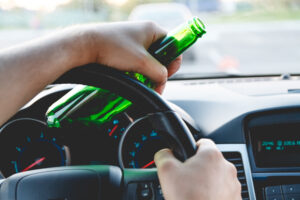 Being hungover – Yes, drunk driving is dangerous. And every person should know that they should not drive if they are drunk. However, as this article from AAA notes, hungover driving may not be much better. Even with a low blood alcohol concentration, recently-drunk drivers can be tired, weak, dizzy, confused and feeling sick. Such conditions can make it more difficult to make smart, fast decisions, which are crucial when driving.
Being hungover – Yes, drunk driving is dangerous. And every person should know that they should not drive if they are drunk. However, as this article from AAA notes, hungover driving may not be much better. Even with a low blood alcohol concentration, recently-drunk drivers can be tired, weak, dizzy, confused and feeling sick. Such conditions can make it more difficult to make smart, fast decisions, which are crucial when driving.- Being tired – Whether a person works odd hours, takes certain medications, has a new baby at home or simply does not get enough sleep, they can suffer fatigue to such an extent that they are not safe to drive. People who are sleepy or sleep-deprived can experience impaired cognitive function and slower reflexes. They can also fall asleep while driving.
- Being upset – People don’t always think clearly in the wake of an upsetting event or altercation. They can be distracted and irrational after getting into a fight; they may be crying and distraught after getting some sad news. Under these circumstances, it may not be safe for someone to drive.
Being mindful of these conditions and how they can adversely affect driving skills and capabilities is crucial in staying safe behind the wheel.
Unfortunately, not every driver will recognize these and other conditions that make them an unsafe driver. As such, there will be accidents caused by drivers who should not be on the road. If this happens to you or a loved one and there are serious injuries as a result, it can be crucial to seek immediate medical attention and consult an attorney to discuss possible legal remedies.
Cell Phones and Driving Do Not Mix
Cell phones are a part of our daily lives, and it’s hard to imagine how we’d get by without them. Even still using a cell phone while operating a vehicle of any kind is dangerous and can contribute to serious accidents. This is true of making calls, but it’s especially dangerous when texting, writing emails, and looking up directions.
When possible, it’s always ideal to avoid texting and driving.
Pennsylvania Laws Regarding Cell Phone Use and Driving
In the state of Pennsylvania, it is illegal for a person to text, check or compose emails, or to use any kind of messaging service while behind the wheel of a car. If caught, violaters of the law will be subject to a fine.
It is not illegal for drivers to make calls while driving, even if they do not have a hands-free set. However, it is recommended that you have a hands-free set if you intend to make calls behind the wheel.
The Dangers of Texting While Driving
If you are texting or using a messaging service while driving, your eyes and full attention are diverted from the road for a significant amount of time. If just the few seconds it takes to look down at your phone and look up at the road, a vehicle on the highway will have traveled the length of a football field.
You can imagine how much this increases the risk of a serious collision taking place. Sideswipe collisions and rear end collisions are far more likely if a distracted driver is using his or her phone behind the wheel.
Be Smart When It Comes to Cell Phone Use
If you have to text, be sure to text only when your vehicle is parked and off the road. If there is an emergency to attend to, be sure to turn your vehicle off of the street or highway in order to return the text, email, or message.
When it comes to looking up directions, do your best to look them up ahead of time and have your GPS going before you are even on the road. If you need to double check directions, turn off the road and park so you can safely look up the information.
And as for calls, we once again recommend that you have a hands-free set. This will allow you to speak while driving without impairing your ability to use the steering wheel.
How to know if you received a concussion after your car accident
Concussions have been in the news quite a bit lately, but many of those discussions have revolved around sports injuries. However, automobile accidents can just as easily cause a concussion and may be more common than you think.
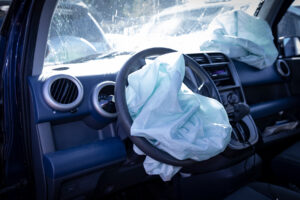 A concussion is classified as a traumatic brain injury and the Centers for Disease Control and Prevention has reported that over 14 percent of all concussions sustained in the United States are due to car accidents. This makes concussions the third most common injury that can be sustained by a car accident.
A concussion is classified as a traumatic brain injury and the Centers for Disease Control and Prevention has reported that over 14 percent of all concussions sustained in the United States are due to car accidents. This makes concussions the third most common injury that can be sustained by a car accident.
Concussions have been known to leave victims with substantial cognitive and physical problems which can affect a person from going to work or even living independently on their own.
If you have been in a motor vehicle accident, you may not immediately know you have suffered a concussion. Sometimes symptoms start well after an accident. If you are experiencing any of the following, you should see a medical professional immediately.
Did you lose consciousness? – At the time of the accident, a sudden jolt to your head by hitting the steering wheel or dashboard may have caused you to lose consciousness. If this happened to you, even if it was for a few seconds, your brain has suffered a trauma.
You are nauseous – One of the most certain signs of a concussion is feeling nauseous. This can be brought on by feeling dizzy or sensitivity to light. While dealing with the nausea you may experience bouts of vomiting.
Confusion and amnesia – It could be a few days after your accident to realize you are not recalling certain things, but concussions can make you easily forget common items. You may even be confused about dates or special events. Another symptom you may find is having a difficult time concentrating.
Fatigue and disrupted sleep patterns – You may experience a general feeling of fatigue where you may not be motivated for even simple tasks. A concussion can also give you trouble falling or staying asleep.
Mood changes – If you find yourself going from angry to nervous or anxious to irritable for no apparent reason, it could be a sign of a concussion.
Headaches – Harsh headaches that can be accompanied by blurred or fuzzy vision is one of the most common symptoms of a concussion.
Seizures -Seizures can happen because the brain has been traumatized in some way.
After a car accident you may be feeling rattled and dis-oriented. You may confuse those feelings as a by-product of being in an accident. Blows to the head that cause concussions can happen even when there is no visible blood or if you are coherent immediately after the accident. If you are experiencing any of the above symptoms, contact a doctor immediately and speak with an attorney who may be able to assist you with your situation.
Study: ‘Infotainment’ systems contributing to distracted driving
In-car technology has come so far in just a short time that it seems like we can do almost anything in our cars while we’re driving. According to a new study, however, this “convenient” new technology comes with the increased risk of distracted driving.
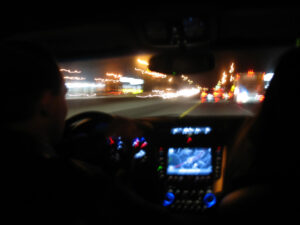 The study, conducted by AAA, examined the amount of time it takes drivers to perform tasks using new voice, touch screen and other new technologies. These tasks include features that auto makers like to highlight like sending text messages, programming navigation and accessing social media.
The study, conducted by AAA, examined the amount of time it takes drivers to perform tasks using new voice, touch screen and other new technologies. These tasks include features that auto makers like to highlight like sending text messages, programming navigation and accessing social media.
Systems take too long to complete tasks
Out of 30 model year 2017 vehicles examined, 12 of their “infotainment” systems were deemed “high demand,” which means it required a great deal of drivers’ mental and visual energies to complete tasks. This means time not focusing on driving.
The study found that no systems fell to the level of “low demand,” which is equal to the amount of visual and mental demand it takes to listen to the radio while driving. Seven systems generated “moderate demand,” while 11 generated “high demand.”
The systems generating very high demand are in cars like:
- Chrysler 300 C
- Dodge Durango GT
- GMC Yukon SLT
- Honda Civic Touring
- Honda Ridgeline RTL-E
All it takes is a few seconds
The study found that it took users 40 seconds to program directions using a vehicle’s built-in navigation system. However, looking away from the road for only two seconds immediately doubles your risk of an accident.
Researchers also found that tasks requiring voice commands, like texting and dialing a call, took significantly longer than touch-based tasks. This mental demand makes up for the low visual demand, meaning the behavior is still quite risky.
AAA recommends that, even with the prevalence of these new systems, drivers should still:
- Program navigation while the car is not in motion
- Not send texts while driving
- Keep their hands on the wheel and eyes on the road
We have written extensively about distracted driving on this blog, with most of it focused on the dangers of paying more attention to your cell phone than the road. However, the increase in these “infotainment” systems could also mean more accidents caused by distracted driving.
You should not assume that automakers have tested whether these systems are completely safe for drivers to use while the vehicle is in motion.
Study: Red-light running accidents at a dangerous high
When the traffic light turns red at the intersection, all drivers know that means they should stop. However, there are still several motorists who disregard red-lights and speed through intersections when it is no longer their right-of-way.
In fact, a new study determined that the number of drivers who do this has significantly increased in recent years.
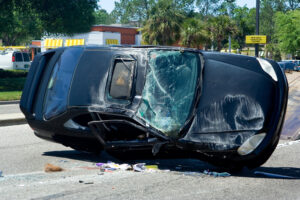 What the study found
What the study found
Last month, the AAA Foundation for Traffic Safety released their findings that red-light running accidents are higher across the country than they have been in the last 10 years. Specifically, the study found:
- Nearly 939 people were fatally injured in red-light running crashes in 2017
- 28% of crash fatalities result from drivers running through red lights
- Vehicle passengers, pedestrians and bicyclists face the highest risk in these crashes
However, according to The Morning Call, Pennsylvania ranked lower in this study than many other states. But our state’s rate of two deaths per million residents is still too high, especially when stopping at red lights should be second nature to all drivers.
Two causes: Distraction v. purpose
There are two conflicting conclusions on what primarily led to the increase of red-light running accidents:
- Some researchers believe that drivers ran more red lights because of the rising rates of distracted driving. This would make sense, as drivers looking down at their phone would likely not see the light change.
- However, the study also found that one in three drivers reported running a red light on purpose within the last thirty days.
It is highly likely that the combination of distracted driving and reckless driving is what caused the stark increase these last few years.
What about red-light cameras?
In the 1990s, states across the nation began installing red-light cameras at intersections. That way, they could catch reckless drivers who violated traffic laws and put other drivers in danger.
However, some studies say that these cameras are not entirely effective at decreasing traffic accidents—namely, rear-end crashes when drivers slam on their brakes at red-lights. This is leading some states, like Texas, to rollback their use of red-light cameras. This could potentially only increase the already high rate of accidents.
Signalized intersections are meant to control traffic and help keep drivers safe. But we cannot rely on red-light cameras to prevent these reckless actions. Pennsylvania drivers must be aware of these increased risks and ensure that they always drive defensively, especially when at an intersection.
Unfortunately, insurance companies are often unfair
Not many people are aware of the unfair tactics insurance companies might use, such as:
- Undervaluing your compensation: The first offer from the insurance company is often a mere percentage of what they think your case is worth. Accepting this settlement could be settling for much less than you deserve.
- Rushing to save money: Insurance companies try to settle injury claims quickly to save money. This could be dangerous, especially since you might not be aware of the full range of damages or injuries the accident caused. For example, many injuries do not appear until long after the accident, such as a traumatic brain injury.
- Eliminating your options: Insurance companies also push settlements because if you accept a settlement, you often cannot return to ask for more, even if your policy covers it. It also might prevent you from filing a lawsuit. You should know that you do not have to rush into a settlement. Pennsylvanians have two years from the date of the accident to file a lawsuit.
Remember: many insurance companies are often looking to save money and manage risks – they are not looking to help support you and your family after an accident.
Properly calculating your full compensation can be complex
Not many people understand exactly how much compensation they can obtain after a car accident. In Pennsylvania, you can recover both economic and non-economic damages to cover:
- Vehicle damages and repairs;
- Medical bills;
- Lost wages and earning ability; and
- Pain and suffering.
Determining the total value of these losses while navigating the claim paperwork and complex insurance policies can be challenging. But an experienced personal injury attorney understands how the legal process works and how to value your claim. They review your case to recover the facts of the accident and increase your maximum compensation.
Even though most personal injury claims are settled outside of court, working with an attorney ensures that you have an ally who knows how to negotiate with insurance companies, and who is prepared to take matters to court and obtain the full compensation you deserve.
Why does aggressive driving seem to increase in the summer?
According to a report from the Association for Psychological Science, many studies indicate the strong correlation between warmer weather and higher tempers on the road. In hot weather, drivers are more likely to:
- Speed excessively
- Pass slow drivers improperly
- Fail to use turn signals
- Disregard other traffic signals
- Be irritable toward other drivers
Since warmer weather eliminates many obstacles on Pennsylvania roads, such as ice and snow, drivers tend to be more reckless.
Report says summer construction projects also contribute to aggressive driving
Many Pennsylvanians complain that the summer months also bring road construction. It can lead to long detours and increase commute times. It is common to feel frustrated or irritated by construction, as well as how other drivers act in construction zones.
KDKA News reports that merging into construction zones can increase the chances of aggressive driving and road rage. Drivers might wait until the last minute to merge, causing other drivers to grow annoyed. These situations are frequent, and they often only serve to spark more incidents of road rage.
What can you do to prevent an aggressive driving accident?
Aggressive drivers are often easy to spot. They usually speed, weave through traffic and make rude hand gestures to other drivers as they do so. This reckless behavior puts everyone on the road at risk of a severe accident. However, individual drivers can work to prevent an accident by:
- Driving defensively
- Following all traffic laws
- Never engaging an aggressive driver
If an aggressive driver does cause an accident, it is critical to:
- Obtain medical attention. Even if injuries do not seem severe, it is important for individuals to check themselves for injuries and see a medical professional as soon as possible after the accident.
- Avoid arguing with the aggressive driver. It is tempting to argue, especially when the aggressive driver was at fault for the accident. However, arguing with an aggressive driver could escalate the situation into an extreme and violent road rage incident. Only exchange insurance and contact information.
Aggressive drivers might put others at risk on Pennsylvania roads, but responsible drivers can help reduce that risk by driving safely and avoiding interactions with aggressive drivers.
Navigating the confusion of multi-car pileup crashes
In some accidents, more than two parties are involved. Unfortunately, multiple drivers may be seriously injured due to a single driver’s fault. Multi-vehicle accidents can be highly destructive – and confusing – for the injured drivers, passengers or surviving family members.
 The first hurdle that you may encounter in this scenario is taking action at the accident scene. Whether the accident occurred on a bustling highway or a neighborhood corner, it is essential to alert the police immediately. In these serious collisions, first responders can help all victims receive medical attention as well as build a record of the incident.
The first hurdle that you may encounter in this scenario is taking action at the accident scene. Whether the accident occurred on a bustling highway or a neighborhood corner, it is essential to alert the police immediately. In these serious collisions, first responders can help all victims receive medical attention as well as build a record of the incident.
After addressing any emergencies, a different kind of task arises: figuring out who to hold liable for your injuries. During multi-vehicle accidents, the at-fault driver is not usually obvious. In fact, several drivers may have contributed to the crash. It is only through the aftermath that you might learn what truly happened.
If you have serious injuries from a complicated accident, it may be in your best interest to pursue compensation with the help of your lawyer. The obstacles you may face in your case include:
- Assessing the extent of your injuries
- Identifying the at-fault party and the right insurance company with which to make a claim
- Proving that another driver caused the accident, which would make them liable for your injuries
There are several ways you may determine who is at fault for the crash. Many multi-car accidents start a chain-reaction as the drivers behind them are unable to stop in time. Therefore, the drivers who crashed the farthest up the road may be the most likely to be liable. Accident reconstruction and witness testimony are usually crucial pieces of these cases.
Insurers might initially deny your claim – and their accountability – due to a lack of clear evidence from the chaotic accident. Therefore, a personal injury lawsuit might be a necessary step to prove whether they are liable to compensate you.
What Uber says
In the event of an accident, Uber has a specific process that all drivers must follow. This process includes the usual procedure after an accident, such as checking for injuries and contacting police or paramedics. However, then Uber drivers must:
- Contact Uber to inform them they were involved in an accident;
- Explain what happened; and
- Complete an Incident Report Form for Uber’s insurance company.
It is also critical to contact your own insurance company since Uber’s insurance company only covers all damages or injuries in an accident in certain circumstances.
 What else should Uber drivers do after an accident?
What else should Uber drivers do after an accident?
Of course, if you are injured in an accident, it is essential to obtain emergency medical attention as soon as possible.
If you are able, it is also helpful to:
- Take pictures of the damage to your vehicle, as well as your injuries;
- Obtain accounts from any witnesses, if there were any;
- Exchange information with the negligent driver; and
- Document a written record of your account of the accident.
This process is similar to the steps any driver should take after an accident. However, Uber drivers might face some additional challenges if they are involved in an accident. And it might be necessary to consult an experienced attorney to help you recover compensation, despite these challenges.
Obtaining compensation is critical – regardless of challenges
Dealing with severe injuries after an accident is often stressful enough. An accident could change your life in seconds, and if it was not your fault, you deserve compensation to help you recover.
One of the main challenges Uber drivers face relates to their employment classification. Uber drivers are considered independent contractors. Therefore, they do not obtain the same benefits employees do. This includes workers’ compensation benefits. That is why it is critical for Uber drivers to protect themselves and fight to obtain the personal injury compensation they deserve if they were not at fault for a crash.
